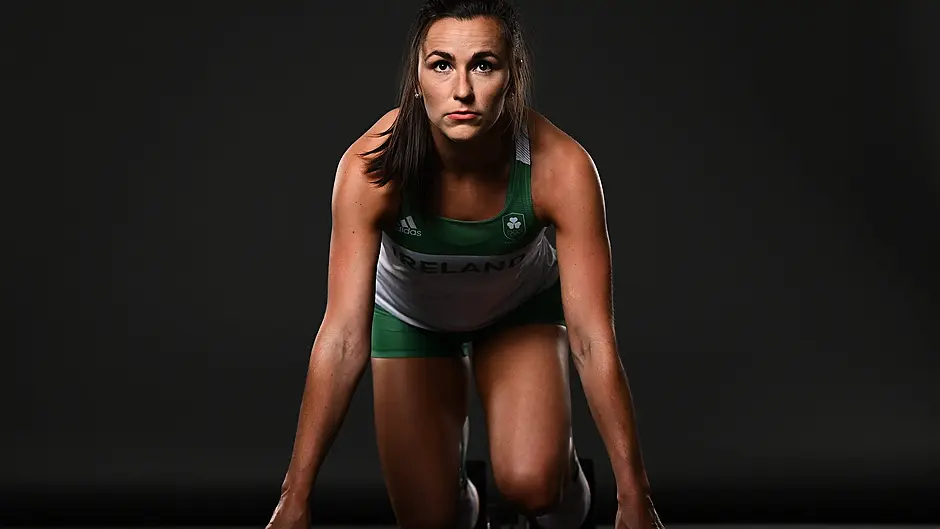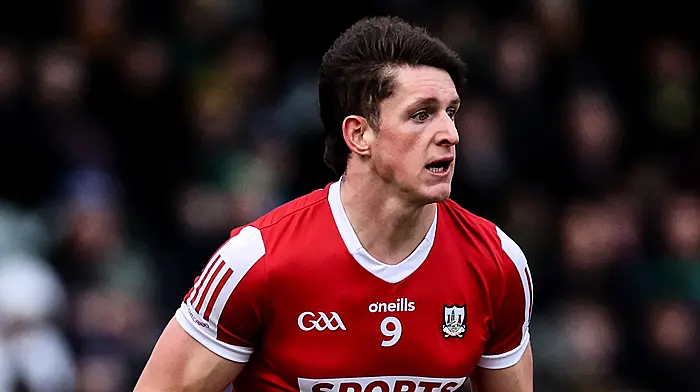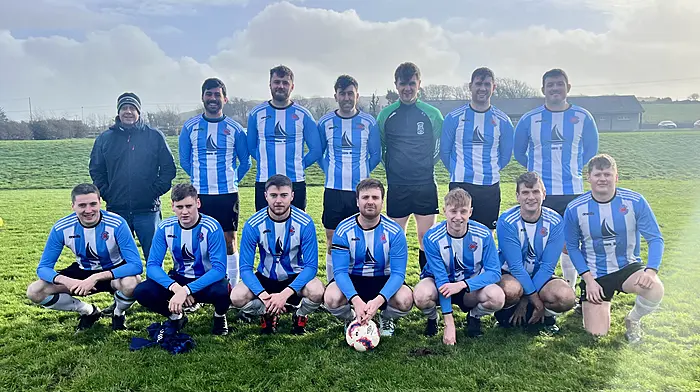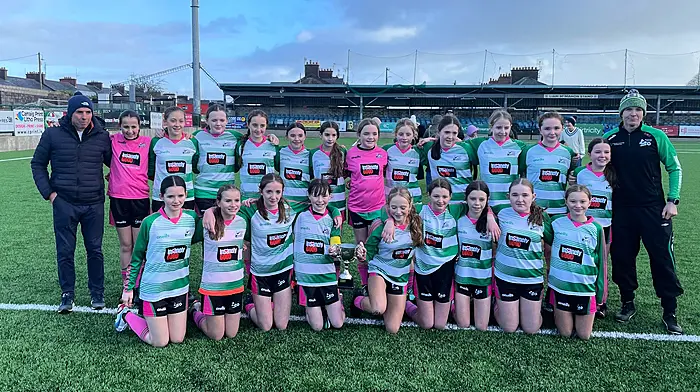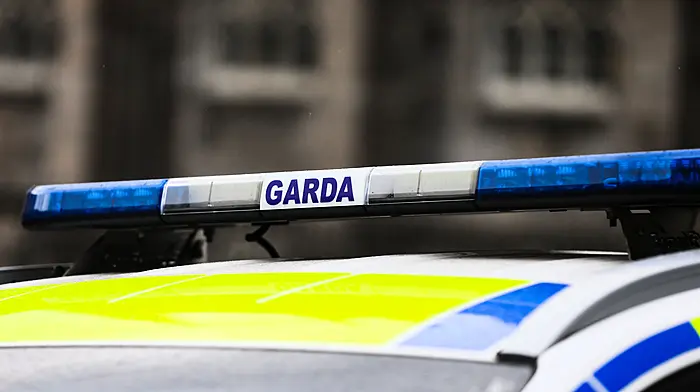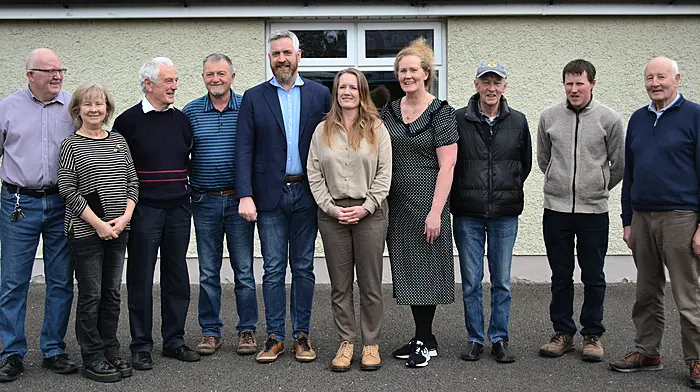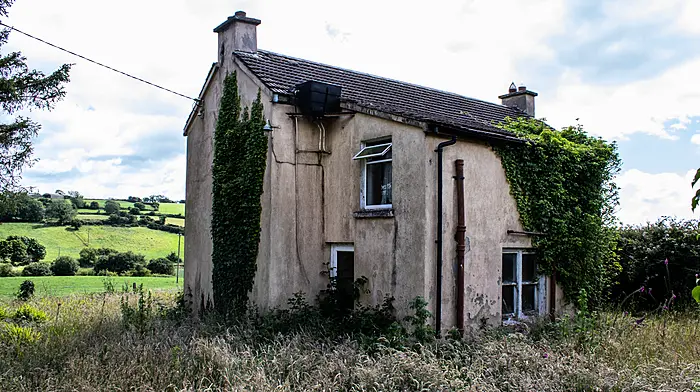Phil Healy is creating history on the track as records tumble and history is made, but her off-the-track legacy is even more important. The Ballineen bullet, who will compete in three events at the Games, chatted to KIERAN McCARTHY ahead of the Olympics
**********
DÁIRE Bohane was nine years old when he met his hero for the first time. He left football training early that night to make the 20-minute journey from Skibbereen to Rosscarbery. He didn’t want to be late.
He was still dressed in his GAA training gear when he arrived at the Celtic Ross Hotel with his aunt Anne. Dáire had heard that Ireland’s fastest woman, Phil Healy, was being presented with a West Cork Sports Star monthly award on this Tuesday night in August 2018 – and he wanted to meet her.
He stole the show.
‘I was taken aback that night because he really looked up to me and you could see it meant a lot to him,’ Phil recalls.
Dáire was full of questions. Good ones, too. He runs with Skibbereen AC and loves athletics so he knows his stuff. He even brought a programme from that summer’s Cork City Sports meet that he wanted Phil to sign. That was when she became the first Irish woman ever to break 23 seconds for the 200 metres. Dáire reeled off her record time: 22.99 seconds. He knew her PBs, too. He was a big fan, and still is now.
He met his hero for the first time that night and she exceeded his expectations. But that’s Phil: a superstar on the track, impressively normal off it. No airs and graces. No grandeur. There’s no bullshit there, her coach Shane McCormack explains. She’s just Phil. She’s not one for the spotlight or the fanfare; that’s not her at all. Even the tag of ‘Ireland’s fastest woman’ doesn’t sit comfortably with her. That grounding, traceable back to home, is a key piece of her jigsaw.
‘I see myself the same as everyone else. I’m just normal,’ Phil explains.
‘I train really, really hard, and I’m getting the reward for the work that I’m putting in.
‘I still find the attention surreal, to be honest. It is a bit mad, isn’t it? Even when I am back home, I keep the head down. I’m not into the fuss.’
 Phil Healy with young fan Dáire Bohane in 2018.
Phil Healy with young fan Dáire Bohane in 2018.
But she makes time for her fans. Like she did with Dáire that night. And there are many, many more like him. Phil knows that there are people who look up to her as a role model so it’s important she gives them the time they deserve. She still remembers players who signed autographs for her when she was a kid following GAA. She remembers, too, those who didn’t.
‘You could be the difference between them staying in the sport or not,’ she says.
She’s relatable, down-to-earth, with an inspiring story: the girl from a farm in Knockaneady in rural West Cork who became Ireland's fastest woman ever. But she wasn’t always the fastest – and that’s why Phil’s story is so important.
***
In athletics Phil was a late developer. She didn’t hit her stride until her late teens. She could have given up and was advised by one person that, maybe, athletics wasn’t the sport for her.
Phil was dabbling in a few sports at the time, dipping her toes in different ponds to see where she could make the biggest ripple. There was athletics with Bandon AC, camogie with Enniskeane, football with St Oliver Plunkett’s and basketball with her secondary school, Coláiste na Toirbhirte in Bandon.
It’s a good thing that she has a stubborn streak and an older sister Joan who was the sprinting trailblazer in the Healy household in Ballineen. Joan, two years older, was – and still is – one of the fastest women in Ireland, still joint fourth on the all-time Irish women’s 60m indoor rankings, alongside Phil. It was the younger sister who was hanging onto Joan’s coattails in those early years.
‘It’s because of Joan that I stuck with athletics,’ Phil says.
‘If she wasn’t in the sport and doing what she was doing I would have given up, maybe listened to that advice and stuck with the GAA instead. Being told that is a big knock to your confidence, especially when you are that age.
‘But I stuck with it and I’m here now going to an Olympics in three events.’
It’s a story Phil feels is important to tell. From being told athletics wasn’t the sport for her, she’s blossomed to become the queen of Irish women’s sprinting, the fastest woman ever in this country and, now, the first Irish woman ever to compete in three events at the same Olympics. Again, she’s inspiring. A real trailblazer in the notoriously hard and lonely world of sprinting. Shane McCormack believes Phil will inspire a generation of kids, both girls and boys, to dream big and work hard. She has shown what’s possible, he says. It’s hard to argue with him.
‘Kids find that if they’re not doing well in a certain sport at an early age, they can let go of it very quickly, but kids need to be encouraged. I was definitely a late developer and didn’t win much underage, but look where I am right now,’ Healy says.
‘I was always making Munster finals where it was the top three that qualified for the All-Irelands, but I was always fourth. It was the same three that qualified from Munster all the time – and they were then the top three at the All-Irelands. Sarah Lavin was there, so too was Grainne Moynihan.
‘I probably hadn’t gone to All-Ireland schools’ championships at that stage either – and that’s the big thing for athletes at that age.’
 Phil Healy and her older sister Joan at home.
Phil Healy and her older sister Joan at home.
When she was 16 years old, Phil gave athletics her full attention. She dropped the other sports. Her times dropped, too. She now had more time to dedicate to athletics. Phil was up and running. Liz Coomey in Bandon AC was her coach and this was an important phase in her development as Phil became a regular on the podium. This is the sport that fits her and she likes to be in control of her own destiny; the end result is linked to what she puts into it.
In 2011, her first serious year, she finished third in the 100m, representing Ireland, at the schools’ international in Cardiff. There was gold in the 100m and 200m at the All-Ireland juvenile championships. Gold, again, for Ireland in the 100m at the Celtic Games and a bronze in the 200m. The collection was building, fast. 2012 was another step forward as her times tumbled and medals followed. Gold in the 100m and 200m at both the Munster Juniors and U19 All-Irelands. Gold, too, in the 100m at the All-Ireland schools. The list goes on and on and on. Then in 2013, her Leaving Cert year, she made a statement: Phil raced to the 100m and 200m senior girls’ double at the All-Ireland schools in record times.
That was also the year she finished fourth in the 100m final at the European Athletics Junior Championships in Rieti, Italy – and that was hugely significant in her rise from talented teen to what she has become, a serial winner.
‘That was the moment that I realised that I could go somewhere here,’ she reflects, and it’s then we saw how Phil, who turned 19 in November 2013 and was now in college in UCC, was not afraid to make the tough decisions.
***
Together, Phil and her coach Shane McCormack are the dream team. Look at what they have achieved together, especially since she moved to Waterford in 2017, as she switched courses, careers, colleges and counties. A big move, but necessary if she wanted to progress to the next level. She took an even bigger gamble in late 2013 when she sent to an email to McCormack asking if he would be interested in coaching her.
‘That was the year that I knew I needed to make changes and that everything needed to move up another level,’ she explains.
Phil had worked with Wexford man McCormack at Munster development squads previously and they clicked.
‘There was only one person in my mind that I wanted to coach me and I was very lucky that he did say yes,’ she says.
It was a risk on McCormack’s side, too, as he was based in Wexford and working as development officer with Waterford IT Athletics Club. But he saw something in Phil that convinced him. The talent was there of course, but it was her mentality, her drive and determination.
‘I have always said that she has the backbone and the character to make a leap of faith that was, for both of us, full of risks. For someone who was 18 to make that call took a lot of spirit and drive that she has in buckets,’ he explained.
Her courage and bravery are also important parts of the Phil jigsaw, and give us a peak behind the curtain to see how this West Cork woman developed into the Olympian she is today. For the four years she studied in UCC, she was coached remotely by McCormack. It wasn’t ideal. It was Phil on her own with a watch on the track. Once every two weeks, she got to see her coach. She still competed in major championships every year but she wasn’t unlocking her potential. Her college course, nursing, didn’t help either. Eight-week work placements included 13-hour shifts back to back and night shifts, and that impacted athletics. It took its toll.
It was time for another tough decision: did Phil want to be a nurse?
‘I have made some hard decisions and they take a lot of thought. I ask myself, “Am I making the right decision?” Shane always says “don’t look back with regrets” and that sticks with me,’ Phil explains. Education is important to her as well and played a role in her decisions.
‘When I was 19, 20-years-old, I changed careers and left nursing. I did a one-year course in applied computer technology before I moved then to Waterford Institute of Technology and started a Masters there in Enterprise Computer Software. I saw Shane every day from then on and I got to train in a group, and I haven’t looked back.’
Still, moving to Waterford stretched the gap between her and Knockaneady. She’s a home bird. Loves getting home. Loves West Cork, too.
‘Even though Waterford and Cork are really close, I may as well be in America. I never get to go home. Before I flew out to Tokyo, the last time I was home was in March – but these are the sacrifices that you have to make and it’s hard but they do pay off,’ she says.
The switch to Waterford helped Phil move up to the next level and the team that McCormack built around her in Waterford moulded Ireland’s fastest-ever woman.
***
It’s time for times. And records. And accolades.
In June 2018, Phil broke the Irish 100m women’s record when she raced into the history books in 11.28 seconds in a meet at Santry. The next month, she became the first Irish woman ever to break 23 seconds for the 200m. She ran 22.99 at the Cork City Sports in CIT. A national record and a PB. She was the first female Irish athlete in 40 years to hold both the 100m and 200m records.
Phil has racked up 14 national senior titles between indoors and outdoors, from 60m to 100m to 200m and 400m, showing an incredible range. There was a double gold at June’s national senior championships, including her unforgettable 200m triumph when she beat her biggest rival, 18-year-old rising star Rhasidat Adeleke, by one hundredth of a second in what would have been a new Irish record if not for the wind being cruelly above the legal limit. She set a new 400m PB this year too, 51.50 in Belfast in May.
 Phil Healy is set to compete in three events at the Olympic Games.
Phil Healy is set to compete in three events at the Olympic Games.
Remember, Phil is only 26 years old. She’s already achieved an incredible amount, but there’s still more to come. She hasn’t fully unlocked her 400m potential, yet she finished fourth in a world-class field at the European Indoor Championships in March. There’s another Olympics in three years’ time and World and European championships in between. At this Olympics she will be the first Irish woman to compete in three events – 200m, 400m and Irish mixed 4x400m relay team – at the same Games. More history.
She’s breaking down barriers and raising standards all the time, and her legacy will be more than her PBs and her records, instead it’s how she is showing what hard work and dedication can bring. Kids all over West Cork can see this, too. She’s the girl from Ballineen that didn’t have an athletics track to train on in West Cork on the way up, but still developed into Ireland’s greatest women’s sprinter.
She’s inspiring people of all ages, including Dáire Bohane, the young fan she met three years ago. He has a message for his hero: ‘Best of luck in Tokyo, Phil. Run as fast as you can in the Olympics and all of us in West Cork will be cheering you on. From Dáire.’
On and off the track Phil is making a difference.

